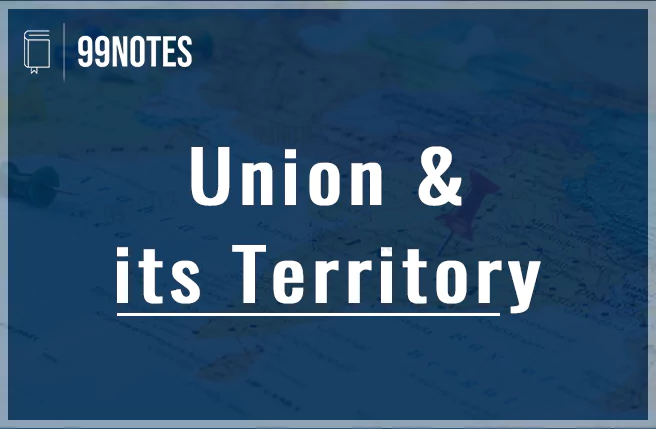RIGHT TO INFORMATION & LOKPAL
The Right to Information (RTI) Act, 2005, empowers Indian citizens to seek information from public authorities, promoting transparency and accountability in governance. It mandates timely disclosure of government records, making it a powerful tool to curb corruption and enhance public trust. The law applies to all levels of government, including central, state, and local bodies, except for organizations dealing with national security.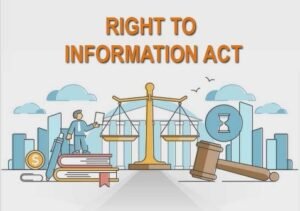
The significance of the RTI Act lies in its role in strengthening democracy by ensuring informed citizen participation. It has been instrumental in exposing scams, improving service delivery, and holding officials accountable. Through proactive disclosure and the ability to file RTI applications, the Act fosters an open government system
Provisions & Implementation of RTI
Right to Information (RTI) is a fundamental tool for strengthening democracy and ensuring transparency in governance. The RTI Act, 2005, empowers citizens to access information from public authorities, making government processes more open and accountable. By providing legal backing to the right to seek information, the Act promotes good governance, reduces corruption, and enhances citizen participation in policymaking. However, its effective implementation depends on the willingness of authorities to disclose information and the awareness levels among citizens.
Provisions of RTI Act, 2005
- Right to Seek Information: Citizens have the legal right to request information from public authorities, which must be provided within 30 days, or 48 hours in urgent cases related to life and liberty.
- Obligation of Public Authorities: Government bodies are required to proactively disclose key information, such as budgets, decisions, and policies, reducing the need for RTI requests.
- Coverage of the Act: The Act applies to all levels of government, including the executive, legislature, and judiciary, except intelligence and security agencies, which are exempted under Schedule II.
- Establishment of Information Commissions: The Central Information Commission (CIC) and State Information Commissions (SICs) serve as appellate authorities to resolve disputes related to RTI applications.
- Third-Party Information: If the requested information concerns a third party, the authority must seek their consent before disclosure to protect privacy and confidentiality.
- Proactive Disclosure of Information: Government departments should publish more information voluntarily under Section 4 of the RTI Act.
- Penalty for Non-Compliance: Public Information Officers (PIOs) can be fined ₹250 per day, up to ₹25,000, for unjustified delays or wrongful denials of information.
- Exemptions from Disclosure: Section 8 specifies categories of information exempt from disclosure, including matters affecting national security, sovereignty, foreign relations, and personal privacy.
Implementation of RTI in India
- Public Information Officers (PIOs): Every public authority appoints PIOs to receive and respond to RTI applications, ensuring efficient information dissemination.
- Appeals Mechanism: Applicants can file a first appeal with a senior officer in the department and a second appeal with the CIC or SIC in case of non-compliance.
- Online RTI Portals: Digital platforms like the RTI Online portal enable users to file applications and track responses, improving accessibility.
- Awareness and Training Programs: Government and civil society organizations conduct RTI workshops to educate citizens and officials about their rights and responsibilities.
 Judicial Interventions: Courts have reinforced the RTI Act’s importance through landmark judgments, emphasizing that it strengthens democratic participation.
Judicial Interventions: Courts have reinforced the RTI Act’s importance through landmark judgments, emphasizing that it strengthens democratic participation.
RTI vs Official Secrets Act
The Right to Information (RTI) Act, 2005, and the Official Secrets Act (OSA), 1923, represent two conflicting principles in governance—transparency and secrecy. While RTI promotes openness and citizen empowerment, OSA is rooted in colonial-era confidentiality norms to protect national security and government interests.
| Aspect | Right to Information (RTI) Act, 2005 | Official Secrets Act (OSA), 1923 |
| Objective | Ensures transparency by giving citizens access to government information. | Prevents disclosure of information that could threaten national security. |
| Nature of Law | Progressive, democratic, and promotes good governance. | Restrictive and punitive, criminalizes unauthorized information sharing. |
| Scope of Application | Applicable to all public authorities; allows citizens to request official information. | Applies mainly to government employees; prohibits sharing of classified information with unauthorized persons. |
| Whistleblower Protection | Encourages whistleblowing by allowing access to public records and exposing corruption or misgovernance. | Discourages whistleblowing; unauthorized disclosure can lead to criminal prosecution. |
| Exemptions | Section 8 exempts sensitive matters like national security and privacy; has a clear and defined framework. | Broad and vague classifications; often results in excessive secrecy without transparency or defined parameters. |
Challenges to RTI Effectiveness
The Right to Information (RTI) Act, 2005, has been instrumental in enhancing transparency and accountability in governance. However, its effectiveness is often undermined by several challenges that hinder access to information and discourage citizen participation. These challenges arise due to bureaucratic resistance, political interference, and inadequate enforcement mechanisms. Addressing these issues is essential to ensure that RTI serves as a powerful tool for democratic empowerment.
- Delayed Responses: Many public authorities fail to provide information within the mandated 30-day period, leading to frustration among applicants and weakening trust in the system. In cases involving life and liberty, where replies should be given within 48 hours, delays can have severe consequences.
- Misuse of Exemptions: Section 8 of the RTI Act allows exemptions for disclosing information related to national security, foreign relations, and personal privacy. However, authorities often misuse these provisions to unjustly deny information, reducing transparency.
- Harassment of RTI Activists: Many whistleblowers and activists using RTI to expose corruption have faced threats, assaults, and even assassinations. The absence of strong legal protections for them discourages citizens from seeking information on sensitive matters.
- Lack of Awareness Among Citizens: Many people, especially in rural areas and marginalized communities, are unaware of their RTI rights and procedures, limiting the Act’s impact. Government efforts to promote RTI awareness have been insufficient.
- Weak Implementation of Penalties: Public Information Officers (PIOs) who fail to provide information or give misleading replies can be fined up to ₹25,000. However, penalties are rarely imposed, leading to non-compliance and bureaucratic apathy.
- Political and Bureaucratic Resistance: Government officials and politicians often perceive RTI as a threat to secrecy and governance control. This results in deliberate delays, reluctance to disclose sensitive data, and pressure on information commissions to suppress disclosures.
- Vacancies in Information Commissions: Many Central and State Information Commissions (CIC and SIC) have unfilled positions, leading to a backlog of appeals. The slow disposal of cases weakens RTI’s impact and discourages applicants from pursuing their requests.
- Digitization Gaps and Accessibility Issues: While online RTI portals have improved access, digital illiteracy, poor internet connectivity, and language barriers make it difficult for many citizens to file and track RTI applications.
Way Forward for Strengthening RTI
The Right to Information (RTI) Act has played a crucial role in promoting transparency and accountability in governance. However, to enhance its effectiveness and address existing challenges, a well-structured way forward is necessary. Strengthening RTI will ensure that citizens can exercise their right to information without unnecessary barriers and that public institutions remain accountable.
- Speedy Disposal of RTI Requests: Ensuring strict adherence to the 30-day response time by penalizing delays and mandating a time-bound appeal process can improve efficiency. Strengthening the capacity of Public Information Officers (PIOs) and Information Commissions can help reduce backlogs.
- Filling Vacancies in Information Commissions: Many State and Central Information Commissions suffer from vacancies, delaying appeals. Immediate appointments, along with increased staffing, will improve case disposal rates and enhance RTI effectiveness.
- Stronger Whistleblower Protection: Enacting stricter laws to protect RTI activists from threats and violence is essential. Implementing the Whistleblower Protection Act, 2014, in a robust manner will encourage more citizens to expose corruption without fear.
- Reducing Misuse of Exemptions: Authorities often deny information under broad interpretations of Section 8 (exemptions). A stricter review mechanism for refusals, including an independent oversight body, can prevent unnecessary denials.
- Increasing Awareness & Capacity Building: Large-scale awareness campaigns, especially in rural areas, will empower citizens to use RTI effectively. Training programs for government officials will ensure better compliance with RTI norms.
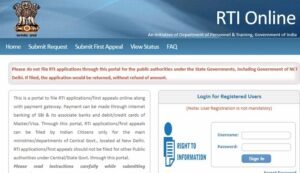 Strengthening Penalty Provisions: Many officials ignore RTI queries without facing consequences. Strict enforcement of penalties for wrongful denials and delays will enhance accountability among public authorities.
Strengthening Penalty Provisions: Many officials ignore RTI queries without facing consequences. Strict enforcement of penalties for wrongful denials and delays will enhance accountability among public authorities.- Enhancing Digital Accessibility: Promoting online RTI portals in regional languages and making the process mobile-friendly will expand access. Simplifying filing procedures will help digitally illiterate and marginalized citizens.
- Proactive Disclosure of Information: Government departments should publish more information voluntarily under Section 4 of the RTI Act. This will reduce the burden on RTI applications and promote transparency without the need for formal requests.
For RTI to remain a powerful tool of democracy, continuous reforms and strong enforcement are necessary. By addressing these challenges and implementing the suggested measures, RTI can be made more accessible, efficient, and impactful, ensuring that governance remains citizen-centric and accountable.
Lokpal & Lokayukta
Lokpal and Lokayukta institutions were established to strengthen anti-corruption mechanisms and ensure accountability in governance. The need for these institutions arose due to widespread corruption, lack of an independent grievance redressal mechanism, and growing public demand for a transparent system. Over the years, multiple efforts were made to create a statutory framework to investigate corruption cases against public officials. The evolution of Lokpal and Lokayukta reflects India’s commitment to fighting corruption and enhancing good governance.
Need for Lokpal and Lokayukta
- High-Level Corruption: Corruption in high offices, including among politicians and bureaucrats, required an independent agency to investigate and prosecute wrongdoers without political interference.
- Weakness of Existing Anti-Corruption Mechanisms: Agencies like the Central Vigilance Commission (CVC) and Central Bureau of Investigation (CBI) lacked adequate autonomy, often facing political pressure, limiting their effectiveness.
- Judicial Delays in Corruption Cases: Prolonged legal proceedings allowed corrupt officials to evade punishment, leading to loss of public trust in anti-corruption measures. Lokpal and Lokayuktas were needed for speedy investigation and prosecution.
- Public Demand and Civil Society Movements: The 2011 Anna Hazare-led movement for the Jan Lokpal Bill highlighted citizens’ frustration with corruption and created pressure on the government to establish Lokpal and Lokayukta institutions.
- International Commitments: India ratified the United Nations Convention Against Corruption (UNCAC) in 2011, necessitating stronger anti-corruption laws and institutions to comply with global standards.
Evolution of Lokpal and Lokayukta

Structure & Powers of Lokpal
Lokpal is an independent statutory body established under the Lokpal and Lokayukta Act, 2013, to investigate and prosecute corruption cases against public officials, including the Prime Minister (under specific conditions), ministers, MPs, and Group A & B officers. It functions as an ombudsman to ensure accountability and transparency in governance. The Lokpal is designed to be independent of the executive, with a multi-member structure and defined powers to conduct inquiries, investigations, and prosecutions.
Structure of Lokpal
- Chairperson: The Lokpal is headed by a chairperson, who must be either a former Chief Justice of
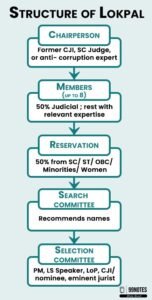 India, a former Supreme Court judge, or an eminent person with expertise in anti-corruption policies.
India, a former Supreme Court judge, or an eminent person with expertise in anti-corruption policies. - Members: Lokpal consists of up to eight members, of whom 50% must be judicial members (former judges of the Supreme Court or Chief Justices of High Courts). The remaining members must have expertise in anti-corruption policies, public administration, or law.
- Reservation in Membership: At least 50% of the members must be from Scheduled Castes (SC), Scheduled Tribes (ST), Other Backward Classes (OBC), minorities, or women.
- Search Committee: A search committee recommends suitable candidates for the Lokpal, ensuring a fair selection process.
- Selection Committee: The chairperson and members of Lokpal are appointed by a selection committee comprising the Prime Minister, Speaker of the Lok Sabha, Leader of the Opposition in the Lok Sabha, Chief Justice of India (or a nominated judge), and an eminent jurist.
Powers and Functions of Lokpal
- Jurisdiction Over Government Officials: Lokpal can investigate corruption charges against the Prime Minister (except in matters related to national security and foreign affairs), ministers, Members of Parliament, and senior government officials.
- Power to Conduct Inquiries and Investigations: Lokpal has the authority to initiate inquiries based on complaints and refer cases to investigative agencies like the Central Bureau of Investigation (CBI) or enforcement directorate.
- Prosecution Powers: Lokpal can recommend prosecution, disciplinary actions, and recovery of assets in cases of corruption. It can direct CBI to file charge sheets in courts for trial.
- Supervision of CBI: Lokpal has administrative control over CBI in corruption cases to ensure independent and unbiased investigations.
- Power to Seize Property: Lokpal can recommend confiscation of assets, properties, or benefits acquired through corrupt means.
- Whistleblower Protection: Lokpal ensures protection for whistleblowers exposing corruption cases and can order necessary safeguards.
- Public Grievance Redressal: Although primarily an anti-corruption body, Lokpal can recommend actions to improve governance and reduce corruption.
Lokpal has the potential to significantly curb corruption at high levels, but its effectiveness depends on operational autonomy, financial independence, timely appointments, and public awareness about its functions. Strengthening Lokpal will reinforce India’s fight against corruption and enhance accountability in governance.
Challenges in Lokpal’s Functioning
Lokpal, despite being a significant step in India’s anti-corruption framework, faces several challenges in its functioning. These challenges hinder its effectiveness in ensuring accountability and transparency in governance.
Legal and Structural Challenges
- Delay in Appointment of Members: The appointment of the Lokpal chairperson and members has often been delayed, affecting its operational efficiency. The first Lokpal was appointed in 2019, six years after the law was passed.
- Limited Jurisdiction Over Bureaucracy: While Lokpal can investigate complaints against high-ranking officials, lower-level bureaucrats, where most public interactions occur, fall under the jurisdiction of state-level Lokayuktas, leading to inconsistent enforcement.
- Exclusion of Judiciary: The judiciary is outside Lokpal’s jurisdiction, limiting its ability to act against corruption in judicial institutions, despite persistent concerns over judicial accountability.
Operational and Functional Challenges
- Dependence on Government Agencies: Lokpal relies on agencies like the Central Bureau of Investigation (CBI) for investigations, raising concerns about independent and unbiased probes. CBI’s autonomy is often questioned due to political interference.
- Lack of Prosecution Powers: Lokpal can only recommend prosecution and disciplinary action, but it does not have direct authority to prosecute or punish officials, weakening its enforcement mechanism.

- Whistleblower Protection Gaps: While Lokpal is expected to safeguard whistleblowers, the absence of a strong whistleblower protection framework discourages individuals from reporting corruption cases.
Political and Administrative Challenges
- Lack of Political Will: Governments have been reluctant to empower Lokpal fully, as seen in delays in appointments, lack of financial independence, and attempts to weaken the RTI framework that supports transparency.
- Conflict with Other Anti-Corruption Bodies: Lokpal’s role overlaps with other agencies like the CVC and CBI, creating jurisdictional conflicts and coordination challenges.
- Limited Public Awareness: Many citizens remain unaware of Lokpal’s functioning, leading to fewer complaints and underutilization of its potential in fighting corruption.
To strengthen Lokpal, it is essential to enhance its autonomy, provide independent investigative powers, expand its jurisdiction, and improve coordination with other anti-corruption institutions. Increasing public awareness and ensuring whistleblower protection will further enhance its effectiveness in promoting transparent and accountable governance.
Role in Curbing Corruption
The Right to Information (RTI) Act and the Lokpal & Lokayuktas Act play a crucial role in combating corruption by ensuring transparency, accountability, and independent investigation of corruption cases. These mechanisms empower citizens, promote ethical governance, and deter corrupt practices.
Role of RTI in Curbing Corruption
- Increases Transparency: RTI allows citizens to access government records, reducing secrecy in public dealings and exposing corrupt activities.
- Empowers Citizens: By enabling people to seek information on government spending, policy implementation, and service delivery, RTI helps detect irregularities and misuse of public funds.
- Deters Corrupt Practices: Officials are less likely to engage in corruption when they know that their actions can be scrutinized through RTI requests.
- Exposes Scams & Malpractices: Major scams like the Adarsh Housing Scam and Commonwealth Games Scam were brought to light due to RTI disclosures.
- Strengthens Accountability: Public authorities are required to provide timely and accurate information, making them answerable for their actions and decisions.
Role of Lokpal & Lokayukta in Curbing Corruption
- Independent Investigation: Lokpal and Lokayuktas act as independent anti-corruption bodies that can probe allegations against public officials, including high-ranking ministers and bureaucrats.
- Legal Action Against Corrupt Officials: They have the authority to prosecute corrupt officials and recommend disciplinary actions, ensuring accountability in governance.
- Reduces Political Interference: By functioning independently from the executive, Lokpal and Lokayuktas minimize political influence in corruption investigations.
- Encourages Whistleblowing: The Whistleblower Protection Act, linked to Lokpal, safeguards individuals who expose corruption, making it easier to report unethical practices.
- Monitors Public Servants: These institutions act as a check on abuse of power by ensuring that public officials do not misuse their authority for personal gain.
Both RTI and Lokpal play a complementary role in reducing corruption by increasing transparency, ensuring accountability, and providing legal mechanisms to punish corrupt individuals. However, their effectiveness depends on strong implementation, citizen awareness, and institutional independence.
Case Studies & Impact
The RTI Act and the Lokpal & Lokayukta Act have significantly influenced governance by exposing corruption, ensuring accountability, and empowering citizens. Several case studies highlight their impact in curbing corruption and improving transparency.
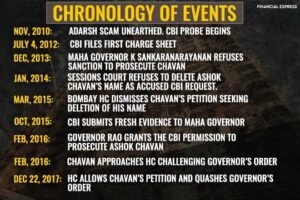 RTI Success Stories
RTI Success Stories
- Adarsh Housing Scam (2010): RTI applications revealed irregularities in the allocation of flats meant for war widows, exposing corruption involving bureaucrats and politicians.
- Commonwealth Games Scam (2010): RTI disclosures unearthed financial irregularities in the organization of the Commonwealth Games, leading to multiple investigations and arrests.
- Public Distribution System (PDS) Leakages (Madhya Pradesh, 2015): RTI was used to expose ration distribution fraud, where food meant for the poor was being siphoned off, leading to reforms in the PDS system.
- Delhi School Admissions (2018): RTI applications helped parents uncover discrepancies in private school admissions, ensuring fairer admission policies.
- MP Medical Scam (Vyapam Scam): RTI applications played a role in exposing recruitment and admission fraud in Madhya Pradesh, leading to large-scale investigations.
Lokpal & Lokayukta’s Impact
- Karnataka Lokayukta’s Role in Illegal Mining (2011): The Karnataka Lokayukta exposed large-scale illegal mining involving government officials and politicians, leading to resignations and legal action.
- Maharashtra Lokayukta and the Irrigation Scam (2012): The Lokayukta investigation into irrigation scams led to ministerial resignations and increased scrutiny of infrastructure projects.
- Effectiveness of Lokpal (2019-Present): Since its formation, the Lokpal has received multiple complaints against public officials, but its effectiveness has been limited due to delays in prosecution and lack of full operational capacity.
Conclusion
The RTI Act and the Lokpal & Lokayukta Act have significantly contributed to transparency and accountability in governance. While RTI has empowered citizens to seek information and expose corruption, Lokpal and Lokayuktas have provided institutional mechanisms to investigate and prosecute corrupt officials.
However, challenges such as bureaucratic resistance, political interference, and delays in action continue to hinder their full potential. Strengthening these mechanisms through digital reforms, greater autonomy, and awareness campaigns can ensure more effective governance and public trust in democratic institutions.
Related FAQs of RIGHT TO INFORMATION & LOKPAL
The RTI Act, 2005 empowers Indian citizens to request information from public authorities, promoting transparency and accountability in governance. It ensures open access to government records, reduces corruption, and strengthens democracy by involving citizens in decision-making.
RTI exposes scams, misuse of public funds, and irregularities in service delivery. It deters corrupt practices by making government actions visible and compelling officials to answer public queries. RTI cases like the Adarsh Housing Scam and PDS leakages proved its effectiveness.
Lokpal (at the central level) and Lokayukta (at the state level) are independent anti-corruption bodies established under the Lokpal and Lokayukta Act, 2013. They investigate complaints against public officials, including ministers and bureaucrats, and recommend action against corruption.
Challenges include delayed responses, bureaucratic resistance, harassment of RTI activists, misuse of exemptions, vacancies in information commissions, limited awareness among citizens, and dependence of Lokpal on government agencies for investigations.
RTI and Lokpal can be strengthened by speedy disposal of cases, strict penalty enforcement, protecting whistleblowers, filling vacancies in commissions, increasing public awareness, ensuring Lokpal’s operational independence, and proactive disclosure of government information online.





